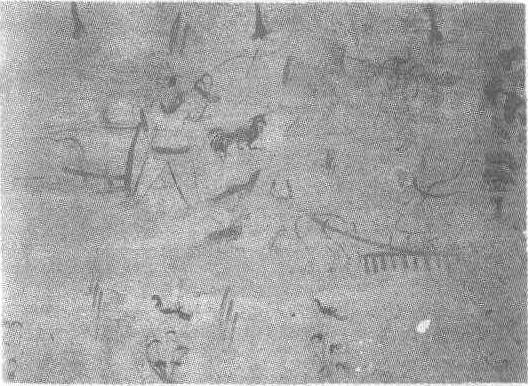农作图壁画
十六国·北凉。纵82厘米,横101厘米。甘肃省酒泉市丁家闸5号墓前室北壁壁画。1977年发掘。此图表现了农夫耕地、耙地、扬场等场面。耕地人头戴尖顶毡帽,露发,蓄须,一手扬鞭,驱牛而耕。耙地人未戴帽,头发披散,跪于小齿耙上,一牛在前面拖耙。扬场人有两位,一位发辫上翘,一位戴尖顶帽,皆赤脚分腿而立,各自在粮堆前飞舞木杈。一群鸡溜进了场院,找到了品食的好地方。此图具有浓郁的乡村生活气息,从一个侧面反映出墓主人是粮满院的殷实之家。

| 词条 | 农作图壁画 |
| 类别 | 中文百科知识 |
| 释义 | 农作图壁画十六国·北凉。纵82厘米,横101厘米。甘肃省酒泉市丁家闸5号墓前室北壁壁画。1977年发掘。此图表现了农夫耕地、耙地、扬场等场面。耕地人头戴尖顶毡帽,露发,蓄须,一手扬鞭,驱牛而耕。耙地人未戴帽,头发披散,跪于小齿耙上,一牛在前面拖耙。扬场人有两位,一位发辫上翘,一位戴尖顶帽,皆赤脚分腿而立,各自在粮堆前飞舞木杈。一群鸡溜进了场院,找到了品食的好地方。此图具有浓郁的乡村生活气息,从一个侧面反映出墓主人是粮满院的殷实之家。
|
| 随便看 |
开放百科全书收录579518条英语、德语、日语等多语种百科知识,基本涵盖了大多数领域的百科知识,是一部内容自由、开放的电子版国际百科全书。